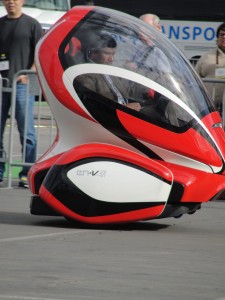Our apologies for having being quiet for a while, and thanks to Tyrone for keeping us updated on urban mobility goings on while we’ve been continuing our research, but we’re glad to report that things on the west coast are starting to get interesting. Courtesy of our friends at Agrion [www.agrion.org] we have been able to hold two really interesting events, which brought together academia, professionals, public agencies, private industry and OEM’s. Below are links to the two meetings that have been held to date plus a link to an upcoming event which, taken together, are starting to sketch out what the new and emerging urban mobility environment could look like.
The first Agrion event, E-Mobility as a Service, brought together an OEM [GM], a public agency [SFMTA], academia [UCB’s TSRC & UIUC] and professional urban designers / architects [MLA & P+W] – see:
http://www.agrion.org/sessions/agrion-en-E_Mobility_as_a_Service.htm
The second Agrion event, Emerging Modes of Personal Transportation, again brought together OEM’s [BMW & Lit Motors], a public agency [SFMTA] and private car share providers [City Car Share] – see:
http://www.agrion.org/sessions/agrion-en-Emerging_Modes_of_Personal_Transportation.htm
Our next upcoming Agrion event in March, co-sponsored by UCB’s Transportation Sustainability Research Center and Perkins+Will, will be taking a look at what sort of regulatory environment will be required to allow for a seamless user experience that would allow access to an integrated public / private / shared range of urban mobility options. We’ll start off with small steps by first focusing on the current San Francisco bay area transit environment, which is currently experiencing lively conversations regarding the roles of public, private and shared mobility providers within the overall bay area mobility picture. Again, participants will include representatives from public agencies, private and shared mobility providers as well as the urban design / architecture / engineering community – see:
http://www.agrion.org/sessions/agrion-en-Emerging_Modes_of_Personal_Transportation_Exploratory_Task_Force.htm
These three events, plus ARUP’s recent “Designing for a Driverless World”, are really exciting as we are transitioning from the original hypothetical “what if” discussed in the 2010 REDCAR Colloquium, to what we actually need to be planning for and by when -i.e. it’s no longer “if” but “when”. In fact the ARUP event really bookended the 2010 REDCAR Colloquium, as Chris Borroni-Bird was the key speaker at both. Chris and I agreed that we’ve come a long way in  3 years!
And finally, just to illustrate how close we are to implementing a “REDCAR” environment, the City of Milton Keynes in the UK, have announced that starting next year , 2015, they will be rolling out a “REDCAR-like” solution to their “first-mile/last-mile” problem which will be based upon GM’s ENV-like vehicles [a program spear-headed by Chris Borroni-Bird when he was at GM]. See link below:
http://www.mkweb.co.uk/News/VIDEO-Back-to-the-future-with-Milton-Keynes-driverless-electric-pod-cars-20131107120614.htm
Keep checking in – these are exciting times for urban sustainability, mobility and the reclaiming of our public realm from the automobile.
I’ll promise to post updates more frequently.
Gerry






